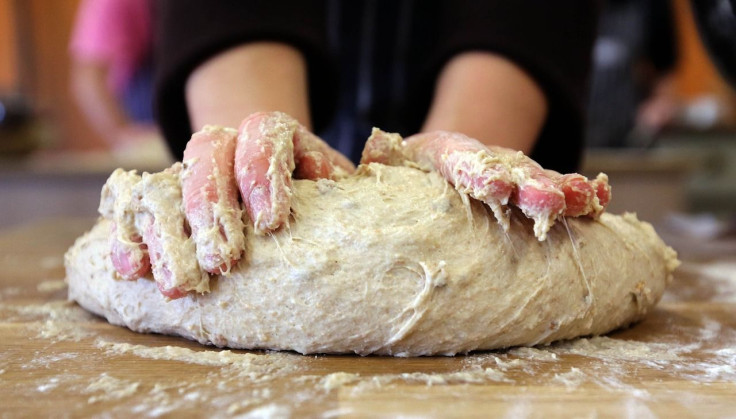Woman Uses Candida Albicans, A Yeast Found In The Vagina, To Bake Sourdough Bread — What?

Zoe Stavri is experimenting baking sourdough bread with vaginal yeast, a species formally known as Candida albicans, and everyone is totally confused and grossed out.
Stavri explained on her blog that she "caused quite a lot of visceral horror" when she announced she'd be using yeast from her vagina to make sourdough bread. It started, she wrote, with "a fatal combination" of a slightly perverse sense of humor, a generally scientific curiosity, and "touch of the thrush" — a yeast infection, which she clarified on Twitter she's been treated for. Yeast infections are marked by a creamy white discharge not unlike cottage cheese (sorry). Stavri mixed but a trace amount with the usual bread-making ingredients, flour and water.
36 hours into my #cuntsourdough project. IT'S ALIVE! pic.twitter.com/Cd0D4gX88p
— Another Angry Woman (@stavvers) November 22, 2015I think I might have provoked the biggest argument about leavening bread since the eleventh century.
— Another Angry Woman (@stavvers) November 24, 2015[Food] day 4 of #cuntsourdough, fed and moved to a bigger bowl pic.twitter.com/1bAwQ06nHA
— Another Angry Woman (@stavvers) November 24, 2015Now, Stavri is live-tweeting the leavening process online and making the Internet's head spin. Her Twitter followers' main problem, if they're not just downright misogynistic and disablist, seems to be Stavri's health. But in an email to Medical Daily Stavri said she did her research.
"I never expected myself having to research microbiology, but here I am today," she wrote. "Before I started my sourdough, I wanted to check if anything in it could kill me, so I read up a bit on temperature ranges in which [C. albicans] lives and grows and thrives, as well as what else makes a sourdough. I looked into temperatures at which other potential contaminants from within and without my vagina could grow. I also looked into sourdough methods, extensively, to make sure I'm doing it right."
Medical Daily reached out to several experts for comment, including the American College of Obstetricians and Gynecologists and various food scientists, but they were neither able to speak on the subject nor refer us to recent research and studies — something Stavri found to be true herself. She was "somewhat disappointed most of the more interesting articles on conditions for growth of [C. albicans] are locked behind a paywall, because I've become quite fascinated by it now."
Yet, over on BuzzFeed News, reporter Fiona Rutherford was able to speak with yeast expert Dr. Ian Roberts, curator of the National Collection of Yeast Cultures at the Institute of Food Research. Regardless of how it sounds, Stavri's experiment is actually possible.
Roberts said "sourdough cultures are generally made using microbes that fall in from the surrounding environment, but there are many different species and strains of yeasts." Yet, he added it’s not likely the yeasts we normally use for baking, Saccharomyces cerevisiae, are found in the body. More than that, just because vaginal yeast is possible to use, it's not something he recommends.
Neither does Theresa Eisenman, who spoke with VICE about Cecilia Westbrook successfully made yogurt from some of her vaginal yeast. In addition to C. albicans, the vagina contains the same bacteria found in yogurt, Lactobacillus; its a delicate between the two that can lead to yeast infections if disrupted, The Mayo Clinic reported. Eisenman, an officer at the U.S. Federal Drug Administration's Center for Food Safety and Applied Nutrition, told VICE that "vaginal secretions are not considered 'food', and they may transmit human disease, a food product that contains vaginal secretions or other bodily fluids is considered adulterated."
But the truth is, experts don't have definitive things to say, if they have anything to say at all, since culturing vaginal yeast is unprecedented. Stavri, however, hasn't found any differences between baking bread with vaginal yeast to the usual wild yeast.
"Five days in, and it looks and smells like a normal vaginal yeast-free sourdough should. I expect that the [C. albicans] itself hasn't grown, and it's just a very normal sourdough," she said. "Within the next day or two it'll be ready to cook with, and if it goes off like a normal sourdough, I have every intention of eating it, because I love sourdough."



























